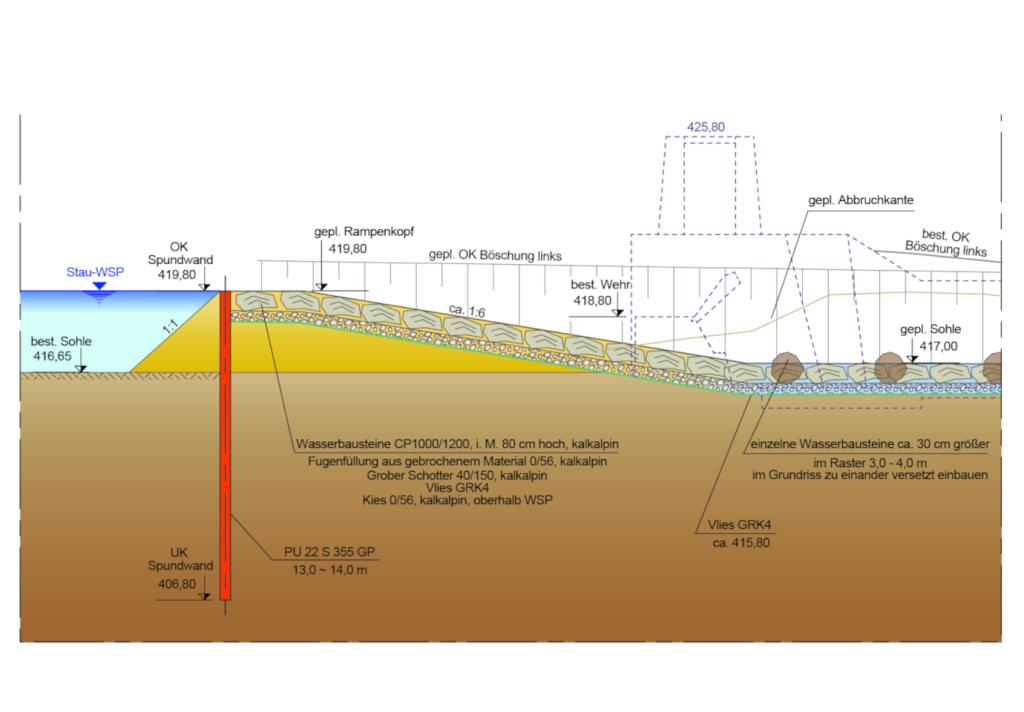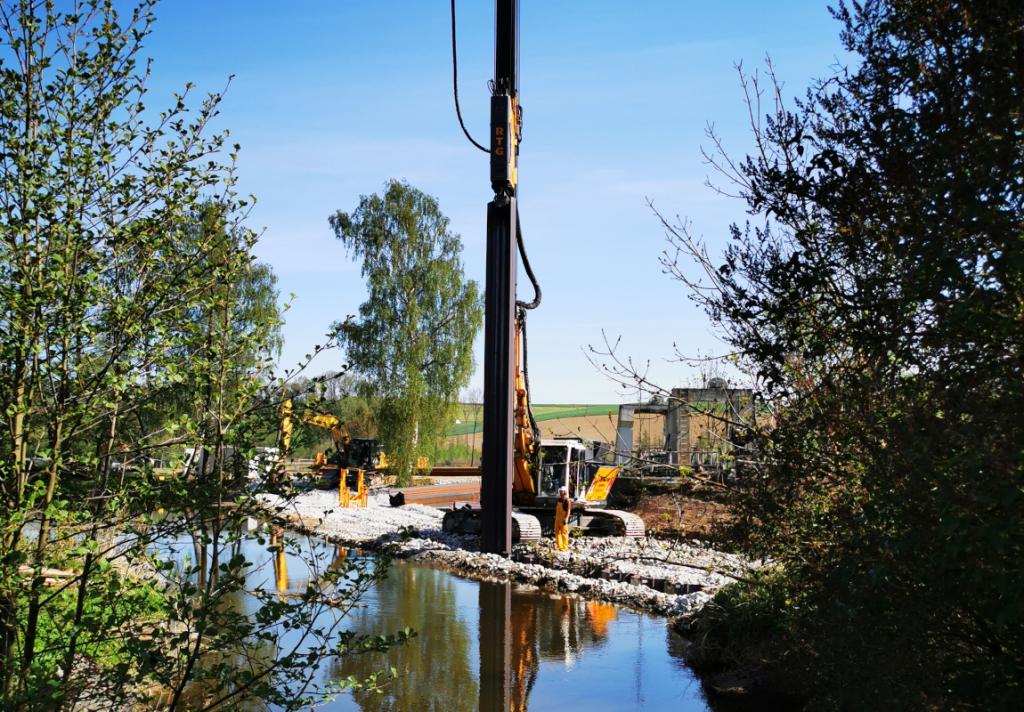Isenmühle weir in Heldenstein, DE | 2020
The solution to the undermining of Isenmühle weir in Heldenstein
The Isen River originates in Lacken, in the district of Mühldorf a. Inn. In the district of Erding, it flows through the municipalities of Isen, Lengdorf, and the city area of Dorfen. After another 76 km, the Isen River flows into the Inn River in the district of Altötting. Many streams and drainage ditches flow into the Isen River because the river plays an important role in the flood management of the region. Several weirs regulate the water inflow and outflow. Some of these Isen weirs are up to 100 years old and are therefore partly in poor condition. They need to be strengthened or replaced by appropriate measures to ensure their long-term function. The failure of a weir can lead to a high volume of water flow, which can have a significant impact on the aquatic ecology of the water-carrying vein.
Due to a construction defect, the Isenmühle weir suffered an undermining in April 2020, and the backwater behind the weir quickly dropped by 1.5 m. A week later, an old watercourse was almost dry, water plants dried up, and several larger fish were cut off from the main stream. Under enormous time pressure, a solution was developed by the engineering office AquaSoli from Traunstein to quickly restore the condition of the water before the undermining and minimize the ecological impact. The weir could no longer be strengthened and had to be demolished and replaced by a bottom ramp with a closed deck structure. The solution envisaged the immediate construction of a stone dam upstream in the Isen weir. The water could then flow back into the side arm of the Isen River, thus restoring the water level above the former weir.
Download
 German
German





